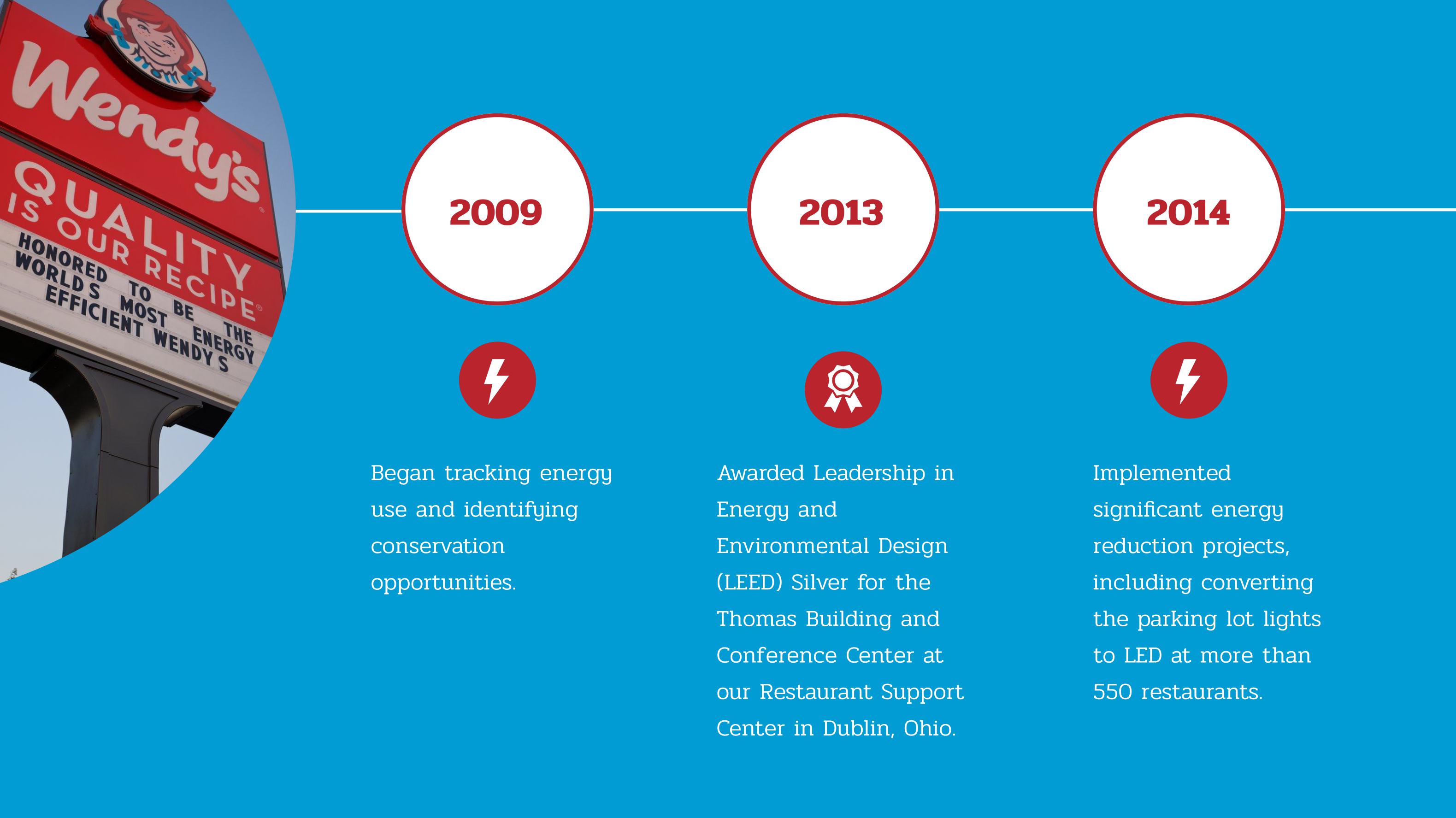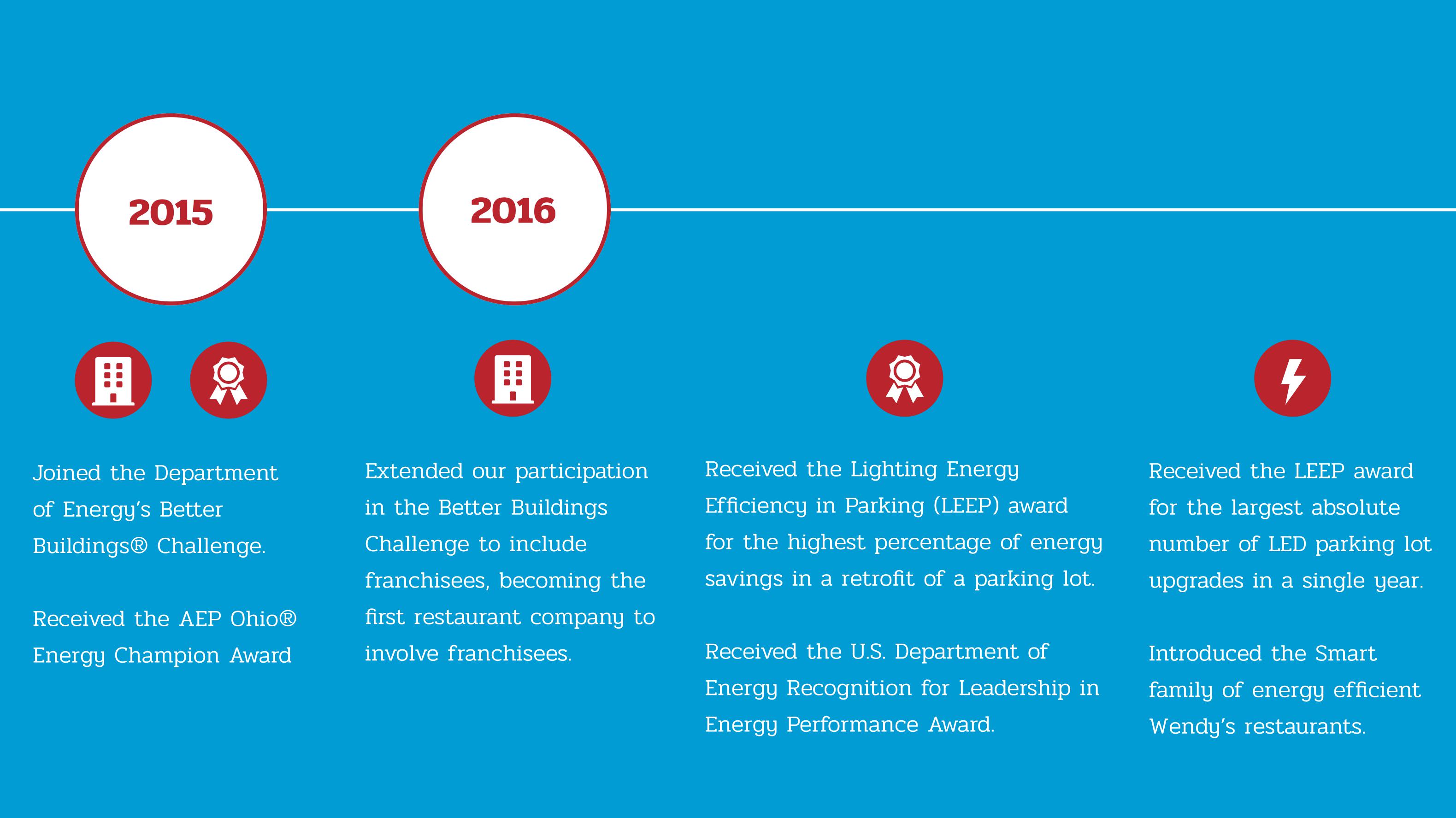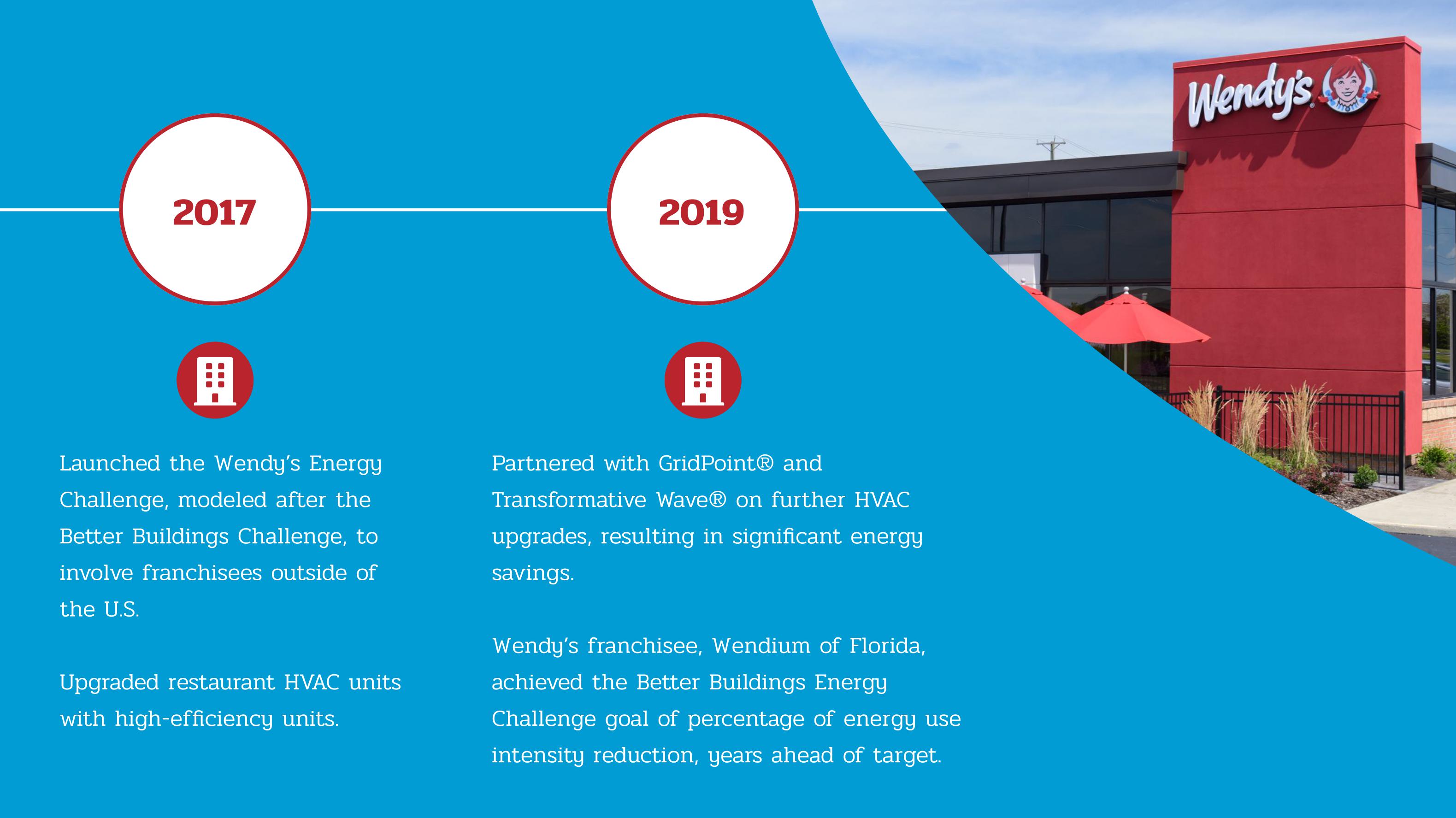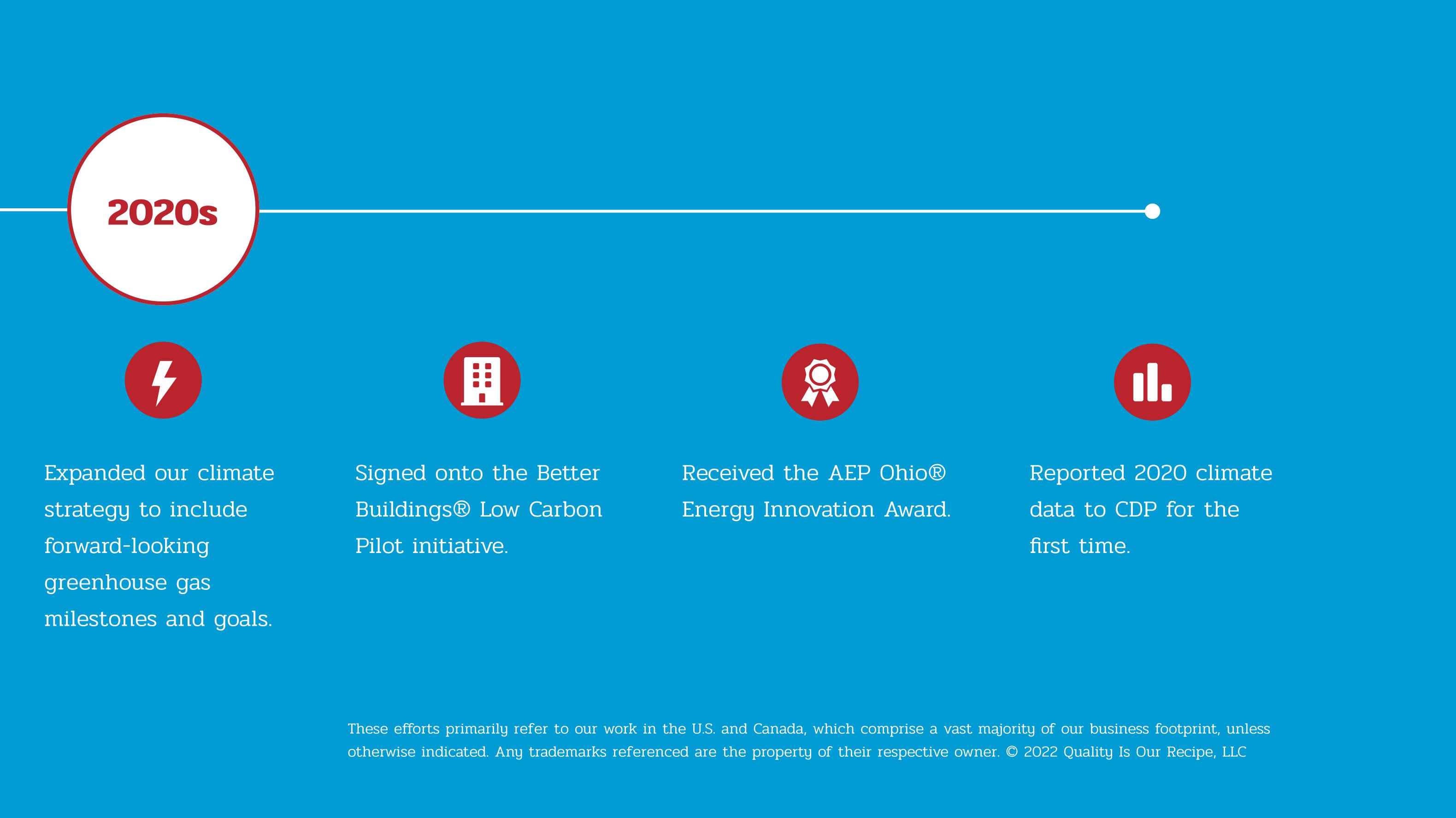Our Goals
Compared to a 2019 base year, by 2030, Wendy’s goal is to reduce:
 | Wendy's Scope 1 and 2 emissions are associated with our Company-operated restaurants and the Restaurant Support Center (RSC), while emissions from Wendy's franchise-operated restaurants and our supply chain contribute to our Scope 3 emissions.
Wendy's Scope 1 and 2 science-based target aims to reduce emissions at a pace consistent with keeping warming below 1.5°C, which aligns to the latest science. Our Scope 3 targets are aligned to SBTi's well below 2°C criteria. |
- Improving energy efficiency with new equipment retrofits and upgrades
- Leveraging Wendy’s more efficient Global Next Gen design standard for new builds
- Engaging franchisees to reduce emissions through the Wendy’s Energy Challenge
- Reducing fuel use in Wendy’s Company-operated fleet
- Updating procurement and operational policies and considering sustainability in procurement decisions
- Collaborating with suppliers, in scope for Wendy’s responsible sourcing goal, to identify ways to reduce emissions or sequester carbon in their operations and shared supply chain
- Exploring place-based projects that assist suppliers in adopting more climate-friendly practices and are tailored to local and/or regional ecosystems
- Evaluating projects to reduce emissions in grazing and feeding, while maintaining or improving animal welfare
- Transitioning to refrigerants with a lower global warming potential (GWP)
- Identifying projects that enable a renewable energy transition
- Sourcing more renewable electricity for Company-Operated restaurants and expanding access to renewable electricity procurement opportunities for franchisees
Wendy's Scope 3 emissions reduction goals align to a 2019 baseline year and incorporate approximately 95% of Wendy's Scope 3 emissions, with purchased goods and services (PG&S) from our supply chain and franchised restaurants comprising nearly 85% and 10% of the Company's Scope 3 emissions, respectively. The bulk of our supply chain emissions are from food and packaging, with beef, chicken, dairy and pork representing our most significant emissions categories.
Keeping food fresh, cooking and serving it and creating a safe, comfortable environment for our customers and crew requires energy. As part of our sustainability mission, Wendy’s is working on multiple fronts to reexamine and reduce the ways our restaurants consume energy in their day-to-day operations.
Sourcing renewable energy for our Company-operated restaurants is an important component of our emissions reduction strategy.
Our Climate Journey





